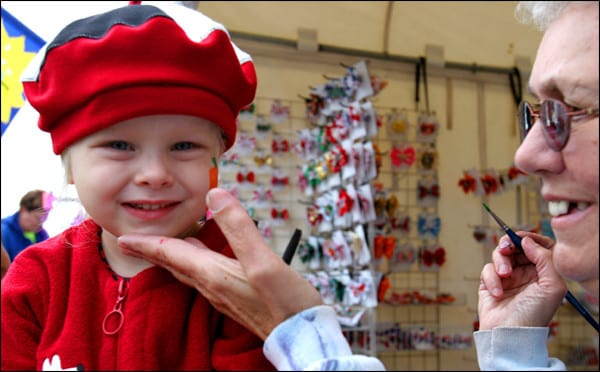
A new report indicates that the size of an arts festival is closely related to long-term sustainability as a business. Yet an arts festival in Louisiana is bigger than ever and thriving. Is now the time to adjust the scope and scale of your arts festival?
Arts festival data
The latest entry in the The Guardian's 'Culture Professionals' series, begins with the provocative question "What is the most sustainable arts festival business model?" The question is followed by an equally confrontational slug line that reads "Vulnerable to public and private funding cuts, festivals should be crunching data to strengthen their case."
It must be first noted that the author, Sarah Thelwall, is an executive with a Culture Benchmark, a consulting agency that specializes in the "financial side of your creative business." The disclosure of Thelwall's employer puts her Guardian piece into its proper context.
Thelwall writes of the current economic climate for arts festivals in the Untied Kingdom, more specifically, the rather gloomy data set that indicates art festival attendance is down from years past.
Data on a sample of 23 festival organisations shows a drop in the percentage of income from both ACE and local authorities, from an average percentage of turnover of 28.7% to 22.9%, and 18.1% to 15.7% respectively.
It's also worth noting that festival income from ACE is below the national average for arts organisations (approximately 40%) and the income from local authorities is above the national average (approximately 13%). Grant income overall has dropped from an average of 61.8% of turnover to 57.7% for the same period.
Despite this climate, festivals are being pushed to deliver year round activity to justify ongoing annual investment despite the unique nature of festival programming and delivery. This is challenging for both large and small festival teams but creates a particular problem for small and mid-scale festivals – ones that that are often reliant on freelancers and volunteers both in the build up and delivery period itself.
Further on in her OpEd, Thelwall aptly describes a challenge some arts festival owners face - operating costs out of line with ticket sale revenue:
Festivals are being pushed to deliver year round activity to justify ongoing annual investment despite the unique nature of festival programming and delivery. This is challenging for both large and small festival teams but creates a particular problem for small and mid-scale festivals – ones that that are often reliant on freelancers and volunteers both in the build up and delivery period itself.
The challenge is that the small festival business model does not allow for easy growth. A very high percentage of cost base is tied up in direct costs of delivery with very little in the way of overheads for year round operation.
The same misalignment happens to art festivals here in the United States. Costs (advertising, marketing, equipment, insurance, staff, etc.) are incurred year round, yet ticket revenue only is in a narrow window. Seasonal business of kinds face this challenge. Some, including Thelwall', have suggested arts festivals review their scope and scale, and adjust the business model to meet market forces. For example, a once a year, medium to large arts festival may want to consider becoming four smaller festivals that occur per fiscal quarter.
If you own or operate a festival, especially one that is of a craft or "maker" nature, Thelwall's article is recommended reading no matter what side of The Pond you are on.
Thelwall may be recommending contraction, but don't tell that to one art festival in Louisiana...
Born on the Buyou
The Bayou City Art Festival (BCAF), held each year in Houston Texas, is expecting 2013 to be the biggest, most successful year in its forty year history. BCAF is a non-profit entity and it has raised millions of dollars for charities and fine art organizations across south Texas. The BCAF was originally held once a year but its success has seen it split and become a biannual event, once in March and then another on October: From the BCAF website
Bayou City Art Festival is commemorated its 40th year in Houston with Bayou City Art Festival Memorial Park on March 25 – 27 and Downtown on October 8-9. The next two festivals will be taking place October 13 - 14, 2012 in Downtown and March 22 - 24, 2013.
This example of an arts festival adjusting its business model and frequency rate to be one of expansion, not contraction, as in the Guardian examples earlier.
The important point for festival operators is to poll the data they have available and adjust size and frequency accordingly. That, of course, assumes you have robust data to review...
What do your ticket sales tell you?
The most salient information you have about your arts festival is ticket sales data. Are ticket sales up or down? How are the pre-sales going five months out from the event date? How are you re-sale agents doing? You should be able to poll your current ticketing software for the answers to these questions. Only then can you begin to entertain any ideas of contraction or expansion.
The ThunderTix plan for art festivals offers the tools to review ticket sales, set-up and conduct pre-sales and keep tabs on the progress of your sales agents by automatically tracking sales by user on your account. Plus, we do not charge you per-ticket fees.